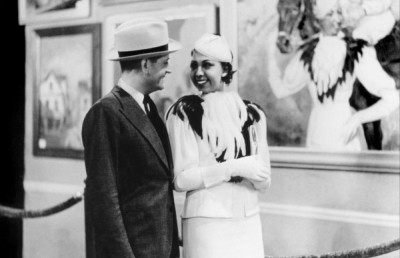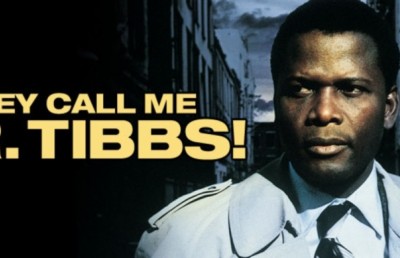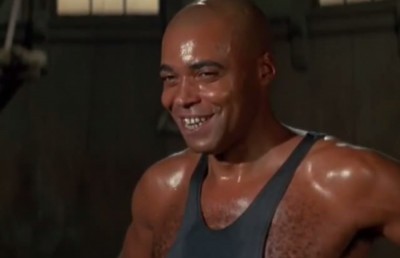Fateless
Journey Into the Soul
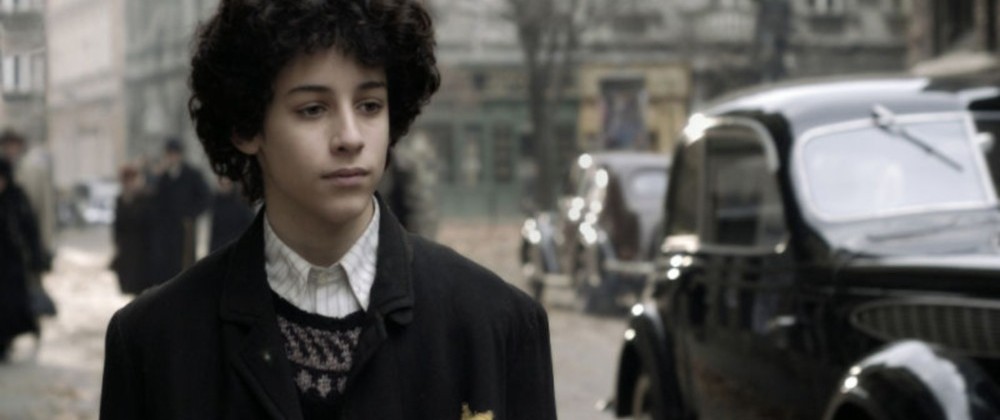
The subject of the Holocaust has been treated on film from so many varied approaches that one would think it impossible to make a new impression. In one of the seminal books on the subject, Indelible Shadows, author Annette Insdorf estimates that she has seen over 200 films on the Holocaust (which Jewish scholars prefer to call Shoah). [1] In a more recent book, scholar Lawrence Baron lists over 800 titles in his “Holocaust Movie Database, 1945-1999.” [2] The cinematic approach to one of the 20th century’s most harrowing events includes comedy (The Great Dictator, Seven Beauties, Life is Beautiful, Train of Life), documentary (Night and Fog, Shoah, Image Before my Eyes), fiction [many based on real events or people] (The Night Porter, The Damned, The Pianist, The Music Box, Schindler’s List, Good Evening, Mr. Wallenberg, Europa, Europa, Bent, Sunshine), and even exploitation (Love Camp 7, Ilsa, She-Wolf of the SS, Salon Kitty, The Gestapo’s Last Orgy). Fateless proves that even a subject as well worn as the Holocaust can inspire artists to scale new heights. With a subject that is already loaded with emotional power, it would be all too easy to rely on manipulative plot machinations to move spectators. Insdorf spends the first few chapters of her book debating what the proper film language is for the depiction of the Holocaust. One of the points that comes out of these chapters is that a film striving for an authentic, valuable contribution to the Holocaust legacy would do best not to rely on conventional Hollywood style realism and melodramatic conventions, preferring “the tense styles and dialectical montage of European films” [p. xv]. First time director Lajos Koltai, a cinematographer by trade, steers far of any such dramatic crutches by relying almost exclusively on the power of visual imagery (editing, cinematography), aided by a beautiful, minimalist score by longtime genius composer Ennio Morricone (with wonderful vocal chants by Lisa Gerrard), to illicit its emotional power.
Fateless begins in Hungary, 1944, on the night before a father (Janos Ban) is to be picked up by officials for Nazi labor camp duties. On the eve of this black event, the father has a final supper with his second wife and extended family, which includes the film’s central character, his 14-year old son Gyuri Koves (Marcell Nagy). The film begins by concentrating on the understated unease between members of this Jewish-Hungarian family as they prepare for the father’s leave taking. Gyuri remains quiet and seems slightly at odds with what is happening. An early gesture reveals to us both his youthful innocence and his ignorance of the horrors that have already fell upon millions of Jews and that await him and his father. The gesture occurs in the film’s opening scene, where Gyuri is walking on a busy street and turns his lapel so that the yellow star attached to his coat that labels him a Jew is clearly visible. We soon learn that Gyuri’s family is already splintered, with his parents separated and his father remarried. Some of the tension we feel in these opening scenes is also sexual, as Gyuri’s stepmother (Judith Schell) has hinted to the audience who she will turn to in the event her husband does not return: a business partner to the family (and indeed at the end of the film when Gyuri returns the stepmother is living with this man). In a scene subsequent to the father being taken away, Gyuri is on a bus on route to his first job. The bus reaches a random check point stop, where a single SS officer tells everyone wearing a yellow star to disembark. They all do so quietly, and wait patiently while the officer in turn awaits his next orders. They are then separated according to age and worth and sent to either labor or concentration camps. The middle bulk of the film follows Gyuri’s brush with death across a series of labor and concentration camps, including Auschwitz and Buchenwald.
The film’s opening scenes are shot in muted, autumnal colors. The film then changes tone during the camp scenes, shifting to a bluish/greyish monochrome that is reminiscent of Andrei Tarkovsky and fellow Hungarian auteur Bela Tarr. Color returns for the final scenes, after Gyuri is liberated and returns home to a Soviet controlled Budapest. Hence Fateless, like several other Holocaust films, moves full circle, by beginning with the principal character’s lead-up to his incarceration, the camp experiences, and then finishing with the liberated character returning home to pick up his life pieces.
In terms of how the prisoners interact during the camp scenes, Fateless demonstrates much of what noted psychologist and concentration camp survivor Bruno Bettleheim wrote in his seminal essay “Reflections: Survival,” [3] about the realities of the concentration camp experience. In a partial response to the depiction of the camp experience in Seven Beauties (Lina Wertmüller, 1976), Bettleheim writes that Seven Beauties does not give an honest account of what it took to survive in a Nazi war camp. To begin, Bettleheim notes that very few prisoners ever escaped from the camps before the Allied forces triumphed, or before they were released by external forces (which is also the case in Seven Beauties). Hence, salvation meant being liberated and staying alive long enough until some external force outside the camp liberated you.
In Wertmüller’s black comedy the character nicknamed Pasquale Settebelleze (played by Giancarlo Giannini) survives the concentration camp ordeal by ‘prostituting’ himself in every way imaginable. Bettleheim characterises what he sees on display in Seven Beauties as ‘empty survivorship’ and strongly opposed the notion that the only way to survive was to act as did the Giannini character, like a vermin. According to Bettleheim the opposite was in fact true: that someone who acted like the Giannini character was most likely to die, and that acting morally and helping out other prisoners was the main ingredient of survival. I will not go into what I think are some problems with Bettleheim’s assessment of Seven Beauties, which are largely a result of his ‘misreading’ of the film as a realistic account of the Holocaust, but the depiction of the camp experience in Fateless (which is not without its own poetic license) is much closer to the descriptions of inmate conduct outlined by Bettleheim, hence more ‘truthful’ to the actual events. In Fateless we see groups of people praying. This recalls one Bettleheim’s other points about ‘surviving’: that people who had strong moral or religious convictions had a better chance of survival than atheists, especially the deeply religious, because their belief system (in an afterlife, a greater good, a God) made them stronger in the face of death. In Fateless there are also many manifestations of prisoners covertly helping themselves, which again is what Bettleheim said was necessary: solidarity rather than competition among prisoners. And again echoing Bettleheim, they survive because the camp is liberated: no one ‘escapes.’
Leaving behind historical accuracy, the finest moments in the film for this viewer are a string of three successive, nearly dialogue-less scenes, whose visual poetry nearly brought me to tears (a very rare occurrence). The three connected scenes give full evidence to the sort of unconventional, non-simplistic style Insdorf endorsed as an approach to the subject of the Holocaust. The first is a scene where the prisoners are ordered to stand, indefinitely, and for no known reason. Morricone’s score adds to the majestic inner strength of the men, including one older man who wilts back and forth like a reed in the wind, but never falls. The camera is mainly at ground level, profile to the men, but twice cuts to a complete overhead shot which captures the uniform lined pattern of men, giving the impression of grass swaying in a meadow, equating their resolve as a ‘force of nature.’ The scene ends with a long shot that climaxes with the sudden sound of a man in the distance splashing heavily to the muddy ground. The abrupt cut to this shot, coupled with the starkness of the sound, makes it a highly powerful and dramatic moment. The next scene sees a starved and weakened Gyuri, terrified, cold, and wet, leaving his bed to wander off into the rainy night in search of the latrine (or a futile attempt to ‘escape’?). The terrain is, as always, a sheet of mud; and the terribly fragile boy is barely able to walk. We later see his knee has swelled to three times its size (no doubt a result of the pressure incurred in an earlier scene where he is forced to carry heavy bags of flour on his small shoulders). In the next scene it is day and the boy’s closest friend, a young Hungarian man Bandi Citrom (Aron Dimeny), admonishes him for not washing and taking care of himself physically. Earlier we learn that this young man has lived through the Ukraine camps and knows what it takes to survive. He wants to share his knowledge and has taken the young boy under his protective wing. Gyuri responds by hugging him and telling him the simple words, “I am cold.” Bandi stops yelling, realizing how fragile Gyuri is, and slips his own jacket over the boy. Gyuri has lost his will to live, exhausted, and hurting from an infection which has set into his improperly operated knee (a close up shot of maggots wiggling in the open wound made many people seated around me squirm). In the next scene, the most abstract in the film, Gyuri sits on a heap of rubbish inside a factory setting, and stares at a German officer seated nearby voraciously eating saukraut and sausage (the prisoners are only given watery soup and the odd slice of bread to eat). At a point the officer senses the boy’s uncomfortable gaze and turns to face away from him. The scene renders Gyuri’s state of weakness and hunger-induced delirium through the mutating, electronic factory sounds. In the next scene Gyuri is tossed onto the back of a cart carrying ‘corpses.’ This is a strange, surreal scene, as some of the corpses are still alive, others half-dead or dead. As he is being carried along on the cart the scene cuts to a striking, upside-down subjective point of view shot reminiscent of the famous ‘buried alive’ dream scene in Vampire (1932). As Gyuri lies in near death he looks up to the sky, and we cut to two or three POV shots of the beautiful dark clouds slowly parting to reveal light, a glimmer of hope, and we hear the boy utter the words, “carrot soup.” Gyuri has somehow regained the will to live, and is taken to a decent hospital to recuperate, where he is treated kindly for the first time by a camp authority figure, a young German soldier.
The camp is liberated by the Allies. Gyuri wants to return home, against the persistent suggestion of a US Sergeant (Daniel Craig) to go to America, where he can start his life anew. As a Jew himself, the American soldier seems to realize the problems that lie ahead of him back in Hungary. The American soldier’s warning foreshadows the less than ideal return home, to a rubble-heavy, half-destroyed, Soviet-controlled Budapest. From this point on the film returns to color, and we hear the boy’s feelings mainly through voice-over. Gyuri’s voice-over is laced with a bitter sense of irony, as he admits to missing certain aspects of the camp life, most notably the time between work and the night time roll call, when the prisoners would congregate, talk, and console each other. He eventually finds his family, only to learn that his father has died and his stepmother has taken up with another man (the business acquaintance seen in the opening). His aunts and uncles are glad to see him alive, but the happiness soon gives way to reality, that he has no place there as a living ‘victim,’ and they suggest that he go live with his mother.
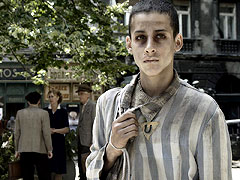
The film ends with Gyuri being shepherded out of his father’s home by his two uncles, who are helpful, kind, but ultimately ineffectual, to go search for his mother. The final image, which oddly recalls the last shot of Silence of the Lambs, sees him in an extreme long shot, walking away from the high angle camera, in search of his natural mother, as we hear his voice-over telling us how he must somehow find the will to live, to search for joy once again. (The exact expression of his thoughts in this final scene has escaped my memory and must await a second screening. Unfortunately, Fateless played for only two weeks in Montreal.)
Some viewers have had difficulty with the film’s conclusion, from the cold treatment Gyuri receives upon returning home, to his ‘nostalgia’ for the concentration camp. For other reasons, Roberto Benigni’s Life is Beautiful also came under similar criticism in some circles, largely as a result of reviewers missing the intended irony of the film’s title. In a defense of Life is Beautiful author Maurizio Viano notes how the film’s title was taken from a quote by Leon Trotsky, written when he was living in exile in Mexico, and realizing that his days were numbered. The quote, taken from Viano’s essay, reads,
Natasha has just come up to the window from the courtyard and opened it wider so that the air may enter more freely into my room. I can see the bright green strip of grass beneath the wall, and the clear blue sky above the wall, and sunlight everywhere. Life is beautiful. Let the future generations cleanse it of all evil, oppression and violence, and enjoy it to the full.
Viano references this quote to underscore the irony intented in the title that was overlooked by many critics who instead wondered out loud, “Can you imagine anyone who actually survived the camps saying that?” [4] The same manner of irony is operating in Fateless, when the young survivor Gyuri looks back nostalgically at Buchenwald, in effect longing for the sense of solidarity among the prisoners which he finds absent on his return to Budapest.
As noted above, I was discouraged to see the film play a mere two weeks in Montreal. I was equally surprised, given the high number of Holocaust related films, both fiction and non-fiction, which have been nominated by the Academy in its history, that Fateless, which was Hungary’s official submission as Best Foreign Film, did not make the Academy nominated list for Best Foreign films of 2005. I was also struck by the many film critics who were troubled by the film’s formal ‘beauty.’ Why do reviewers have trouble reconciling the film’s formal beauty with its ‘ugly’ subject? As A.O. Scott, who gives Fateless an otherwise glowing review, writes in the opening of his New York Times review, “The visual beauty of Lajos Koltai’s “Fateless” is unmistakable, and also a bit disconcerting….For films in this genre —which has grown steadily since Steven Spielberg’s “Schindler’s List” was released in 1993— the test of verisimilitude is usually the ostentatiously accurate rendering of horror. There is plenty of that in “Fateless,” and yet one finds oneself noticing, along with the emaciated bodies and ambient cruelty, the delicacy of the light and the painterly composition of the frames.” [5] Does art have to be so simplistic that a viewer can not make the separation between formal beauty and ugly content? The central character manages to survive, not out of his own selfish actions but out of the selfless, giving kindness and care of his fellow inmates. The beauty in Fateless, rendered with poetic strokes of music, montage, and lighting, renders a formal shape to this human spirit. One thing is certain: the high number of films made on the Holocaust demonstrates that regardless of where you stand on the issue of whether to treat the Holocaust or not, and with what approach, style, or tone, people will continue to make films on the Holocaust, and people will continue watching them.
Fateless: Directed by Lajos Koltai; written (in Hungarian and German, with English subtitles) by Imre Kertesz, based on his novel “Sorstalansag”; director of photography, Gyula Pados; edited by Hajnal Sello; music by Ennio Morricone; production designer, Tibor Lazar; produced by Andras Hamori; released by ThinkFilm. At the Film Forum, 209 West Houston Street, west of Avenue of the Americas, South Village. Running time: 140 minutes. This film is not rated.
WITH: Marcell Nagy (Gyuri Koves), Aron Dimeny (Bandi Citrom), Andras M. Kecskes (Finn), Jozsef Gyabronka (Unlucky Man), Endre Harkanyi (Old Kollmann) and Daniel Craig (United States Army Sergeant).
Footnotes
1 Annette Insdorf. Indelible Shadows: Film and the Holocaust. 2nd ed. Cambridge: Cambridge University Press, 1989.
2 Lawrence Baron. Projecting the Holocaust in the Present. New York: Rowman & Littlefield Publishers Inc., 2005, p. 25. Author Baron does state that his definition of a Holocaust movie is more inclusive than other Holocaust film scholars, like Ilan Avisar (author of Screening the Holocaust) and Insdorf, which accounts for the higher number of entries.
3 Bruno Bettleheim. “Reflections: Survival.” The New Yorker. August 2, 1976.
4 Viano, Maurizio Sanzio. “Life is Beautiful: Reception, Allegory, and Holocaust Laughter.” Jewish Social Studies Vol. 5, Issue 3, Spring/Summer 1999.
5 A.O. Scott. “Finding the Beauty in a Boy’s Days of Horror,” New York Times, January 6, 2006



